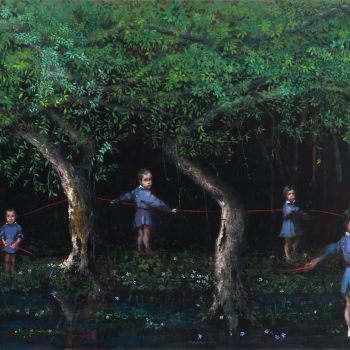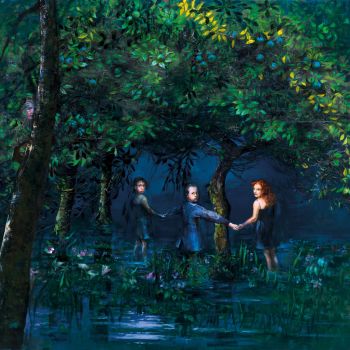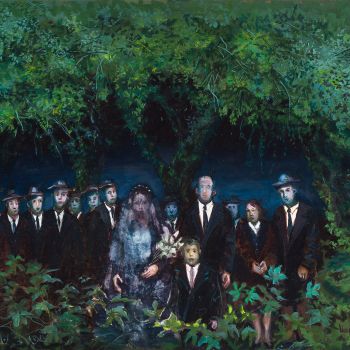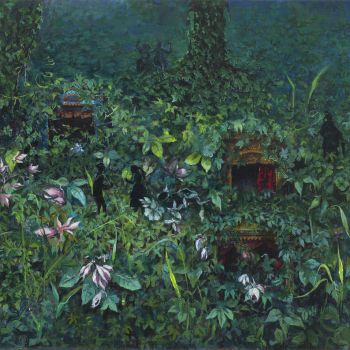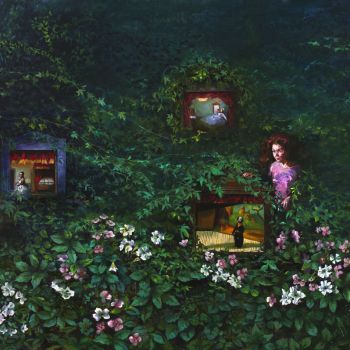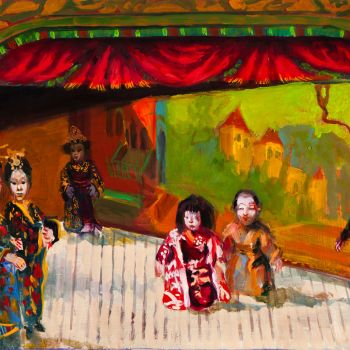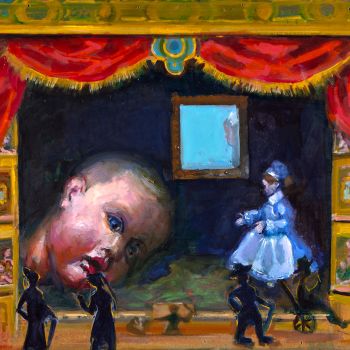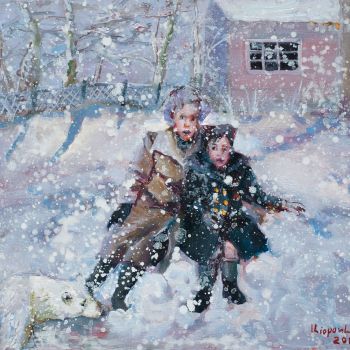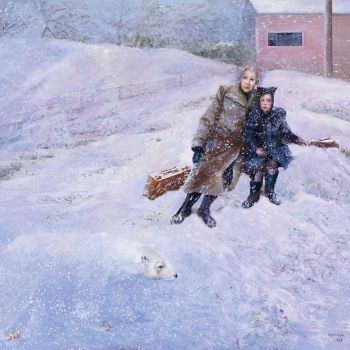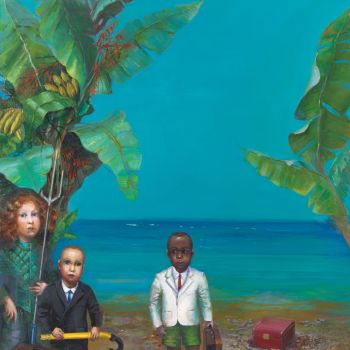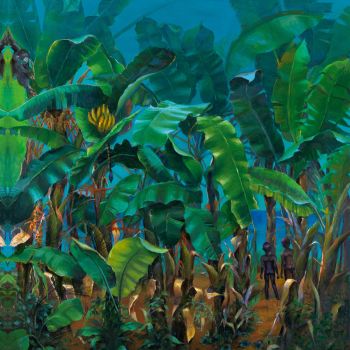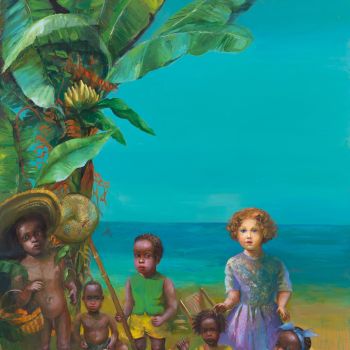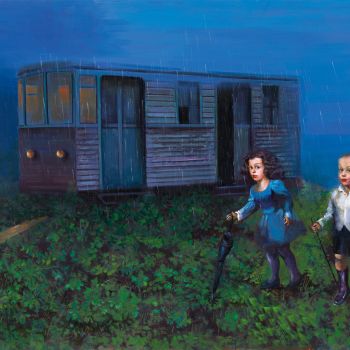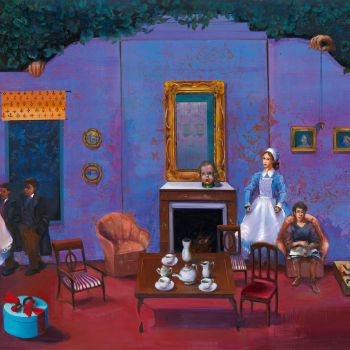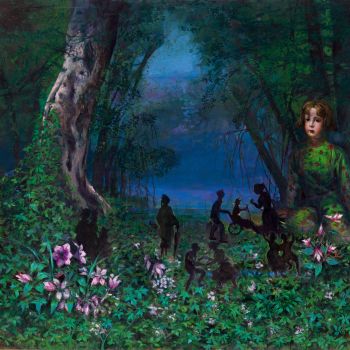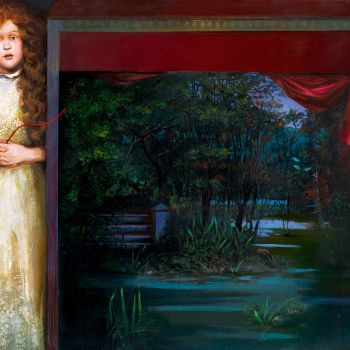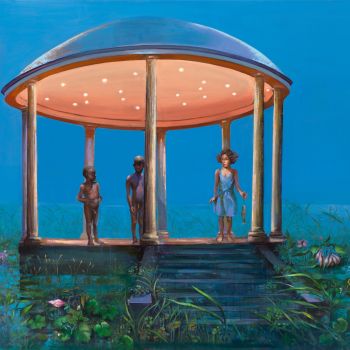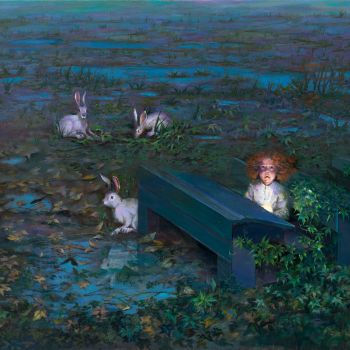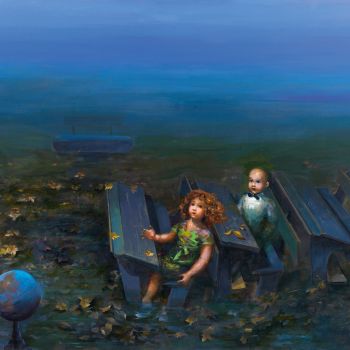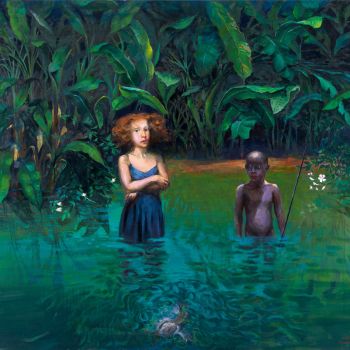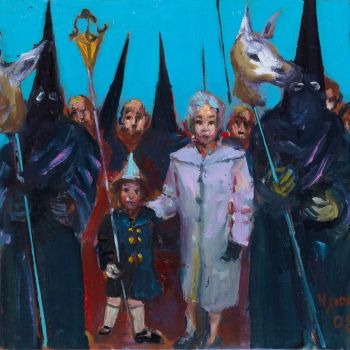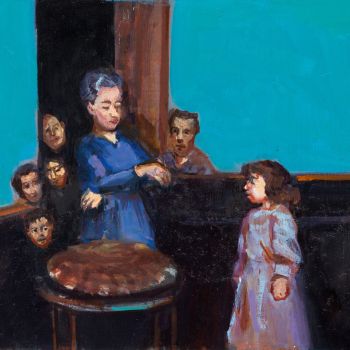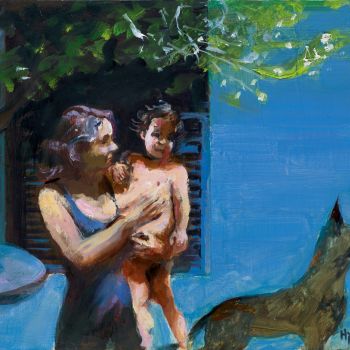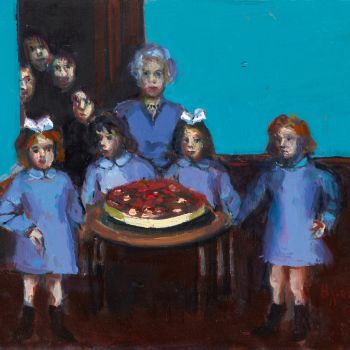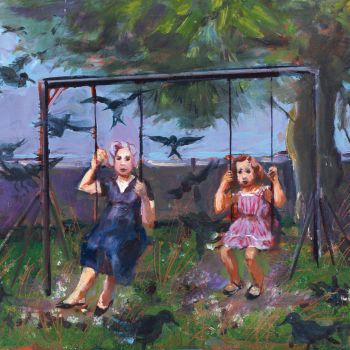Irini Iliopoulou works conscientiously as a painter since the Eighties. So far, her narrative seemed to be consisting of representations of faces, landscapes, or scenes in general. Irini used these representations as opportunities to „talk“ about the hidden beauty of everyday life, as well as to give prominence to all these chances provided by the means depicting it: the Art of Painting. However, behind the reassuring façade of her works, there was another, latent reality, witnessing a slight dose of melancholy and bearing references to the historical or mythical past. However, with her most recent artworks, she introduces a whole new narrative and marks her comeback with a bunch of brand new techniques. Irini Iliopoulou enters a mysterious, onirical and intensely personal world and enriches it with an intensely psychoanalytical approach. The artist seems like trying to paint her own dreams. Her artworks, in large dimensions, look like „frozen“cinema frames from a film trying to keep equal distance between dreams and nightmares.
Her pictures, either landscapes with intense, almost exotic colours, interiors or even outdoor spaces struggling to be the main characters in the painting and therefore fighting against each painting´s inhabitants. The latter are small, lilliput-sized creatures with serious childish faces and adult-looking outfits.
The artist „escapes“ from her usual realistic themes, in order to wander in non-real-but-truthful spaces. In these paradoxical places, tender childhood memories meet the everyday life duties of a contemporary adult person; childhood is definitely the age, when one´s personality is shaped and the basic lines, which will define the adult individual‘s life, are drawn. Diversity (white and black race), inequalities (work and travelling) and other, easily identifiable, stable values of our society equally seem to prevail in her universe; gender archetypes seem to play a significant role as well. Are these two worlds, -our own, real world and the one represented- alike or just a copy of one another? The most important part in her works seems to be the outcome. A theatre setting, a miniature-world, where the role of the puppet or the doll, not only as an innocent toy, but also as a primeval anthropological object, and the role of the human being, blend and unite, provoking mixed feelings of attraction and repulsion. A certain sense of consolation and non-realism is evoked by the bright colours, which are not necessarily compatible with the colours of „this world“, as well as by the impression that these odd „inhabitants“ of her work were „surprised“ by the sudden entrance of the spectators in their world
The themes approached in most of Irini Iliopoulou‘s works, are clear references to the allegories seen in paintings of the Renaissance, as well as in some of the works of Romanticism and Symbolism. And even if, at first glance, Iliopoulou‘s works may seem like a jocund journey to Wonderland, we quickly realise that they are rather a journey to the land of Speculation, in the very first, literal sense of the word, i.e. that of the effigy or simulacrum.
Irini Iliopoulou, definitely in a very mature phase of her career, dares to be introspective. And the most important point in her work is her strength to express this introspection, aiming at the quintessence of the pictorial act, as a simulacrum of life, internal and real.
Katerina Koskina


